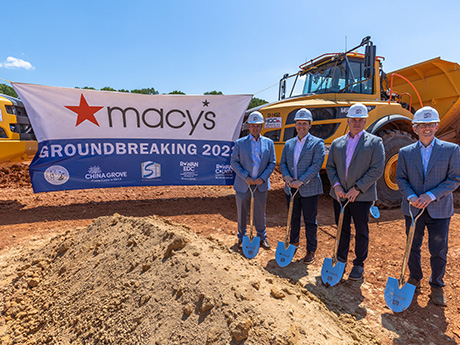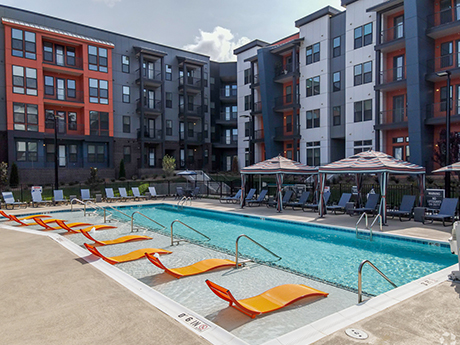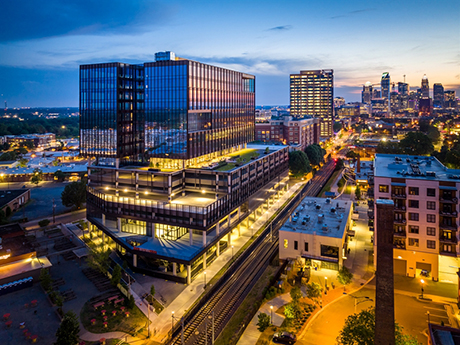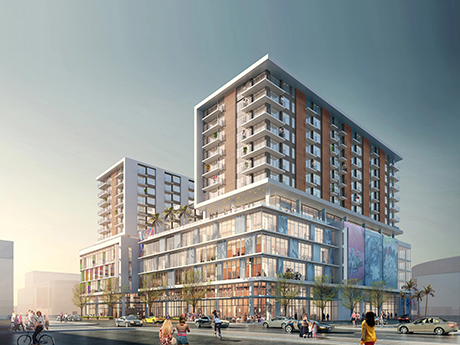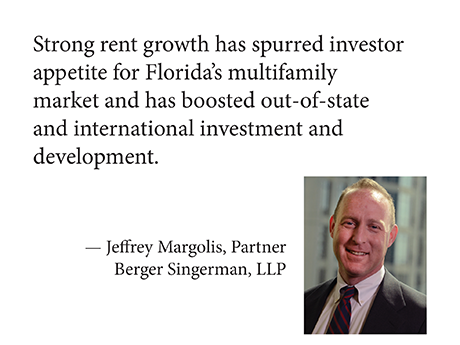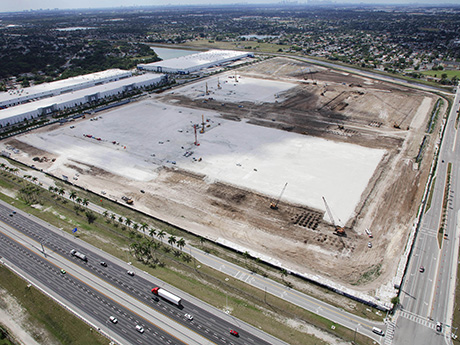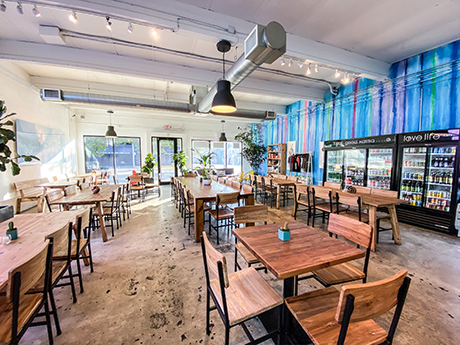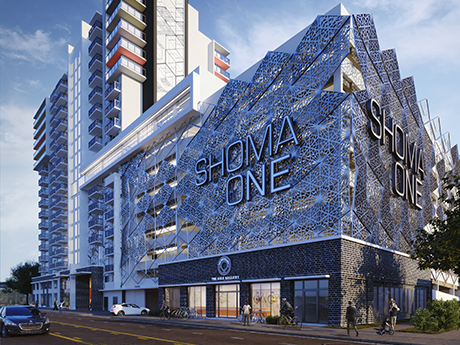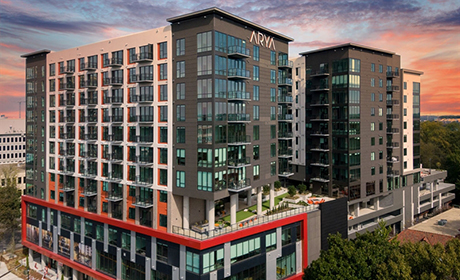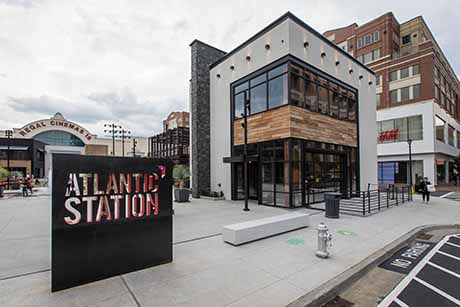In a constantly evolving and unprecedented era, Charlotte is an extremely well-positioned industrial market experiencing significant rent growth, an influx of new capital and development in new frontiers. As of first-quarter 2022, Charlotte was nearing an all-time low vacancy rate and rental rate growth reached more than 12 percent year-over-year. Needless to say, Charlotte has become a prime target for industrial investors, developers and tenants. Staggeringly low vacancy, strong tenant demand and rapid rent growth are trends the industrial real estate sector is experiencing around the county. While these trends are not necessarily unique to Charlotte, they are having a particularly large impact on how Charlotte is growing. These strong underlying leasing fundamentals accompanied by land scarcity left Charlotte under-supplied with developers on the hunt for land. A recent announcement by the Silverman Group is a great example. After closing on a 200-acre site just 30 minutes northeast of Charlotte in Rowan County, the Silverman Group announced a speculative industrial development capable of up to 1.9 million square feet and quickly signed a lease with Macy’s for an e-commerce distribution center spanning 1.4 million square feet. On the west side of Charlotte in Gaston County, NorthPoint Development has seen similar …
Southeast Market Reports
As Charlotte continues to expand its economy and population, its multifamily market is reporting unprecedented levels of activity. The market has experienced a tremendous rebound from the artificial pandemic performance in terms of investor demand, in-migration and rent growth. The market recorded double-digit rent growth in 2021, extremely tight vacancies across submarkets, record lease-up velocity and a modest supply of new deliveries. All these signs clearly point to a landlord’s market, and investors have taken notice. This year looks to be another solid one for Charlotte’s multifamily investment market, coming off a record-setting 2021 with nearly $6.4 billion in transactions (compared to $3.5 billion in 2020 and $3.7 billion in 2019). So far in 2022, pricing remains strong and sales are ahead of the pace set at the start of last year ($1 billion in first-quarter 2022 vs. $566 million in first-quarter 2021). Companies and residents are flocking to Charlotte, which is increasingly recognized as a high-growth market. It is business-friendly, offers a great lifestyle and is a talent magnet. Lowes, USAA and Centene are examples of companies expanding their footprints and hiring thousands of employees, all who need a place to live. Moreover, these are high-paying jobs ($100,000-plus), targeting …
By Chase Monroe, Carolinas Market Director and Charlotte Brokerage Lead, and Chris Schaaf, Executive Managing Director of Tenant Representation, JLL Nearly two years after the onset of the pandemic, Charlotte’s office market is showing strong signs of recovery as economic momentum builds. Last year, the Queen City set the stage for growth with 4.9 million square feet of office space delivered from pre-pandemic projects, boasting over 1 million square feet more than any other metro for deliveries that occurred in 2021. Market-wide preleasing also exceeded 60 percent and nearly 2.1 million square feet of office space was under construction. Entering 2022, the market continued to forge ahead as large occupiers started their return to the office, and leasing activity began to surge throughout the region. And long-anticipated projects, such as Legacy Union, 110 East and The Station broke ground. According to Urban Land Institute’s 2021 annual report, Charlotte ranked No. 6 among the hottest real estate markets in the United States, with developers and investors betting big on Sun Belt cities. Deemed an 18-hour magnet city by the Emerging Trends in Real Estate survey, people and businesses alike are flocking to Charlotte, the so-called “migration destination.” Thanks to strong economic …
There is no denying in-migration is a driving factor in South Florida. Over 650,000 people moved to Miami at the height of the pandemic — nearly 89,000 came from out of state and a quarter of those came from New York. Year-over-year job growth is up 6 percent and is back at peak levels seen prior to the pandemic, while over 27 percent of employment is in office-using sectors for the first time ever. CBRE’s Spring 2022 Occupier Sentiment Survey revealed that most companies are back to developing long-term plans to expand or contract their office space now that employees are returning — at least some of the time — after two years of mostly remote work. For the second quarter in a row, net absorption in Miami totaled over 200,000 square feet, with the majority occurring in Miami’s central business district (CBD). Driven by expansions, Class A product accounted for approximately 85 percent of total absorption in the first quarter. The growth of Miami is starting to solidify as new-to-market tenants that looked to relocate to Miami during the pandemic are starting to move into their office spaces. Since 2020, over 1.3 million square feet of office leasing activity …
Florida Apartment Market’s Strong Real Estate Fundamentals Attract National, International Investors
by Jaime Lackey
There is an overall sentiment that the Southeast multifamily real estate market, and specifically Florida, is doing better than any other region in the United States. Despite record inflation, rising interest rates, increased construction costs and supply chain issues, investors, developers and lenders are becoming increasingly bullish when it comes to the Florida multifamily market. A rising population count resulting in a swift pace of rent growth and tight apartment vacancy have led to increased out-of-state and international interest and capital being invested in the state. With competitive yields and better returns compared with alternative investments, investors view Florida multifamily projects as a sound opportunity. Florida has been less stringent when it came to COVID-19 policies and lockdowns compared with restrictions adopted in the Northeast and on the West Coast. Limited and lenient state-wide restrictions in Florida during the health crisis allowed the state’s economy to recover more quickly than most major U.S. markets. In addition to an established migration of retirees, Florida has attracted a younger population, with workers looking for warmer climates and relaxed COVID-19 policies. Similarly, massive migration from other regions is being fueled by the ease of doing business, a favorable regulatory environment, business-friendly tax rates, …
Amid a record-breaking year for Miami-Dade County in 2021, industrial market fundamentals grew even stronger in the first quarter of 2022. Last year, the national industrial market saw unprecedented activity resulting from unlimited investment capital from Wall Street, private equity firms and REITs deploying significant capital into buying existing income-producing property and development sites. In the first quarter of 2022, market fundamentals continued to heat up in Miami-Dade County and are expected to continue to attract investors and developers that are looking to capitalize on a growing population and soaring demand for warehousing space. The ongoing global supply chain challenges are forcing existing tenants’ requirements to include additional warehouse space for storage. Simultaneously, new-to-market tenants are continuing to flock to the area, despite a shrinking supply of available space. Together, this confluence of activity triggered a record low vacancy rate of 2.7 percent in Miami-Dade County in the first quarter, a 150-basis-point decrease year-over-year. Rental rates also reached a record high of $11.80 per square foot triple-net, which is an increase of 8.3 percent year-over-year. We expect continued growth in port markets, as well as increased leasing activity from third-party logistics and e-commerce tenants. In 2021, Amazon leased multiple locations …
The Sky is Not Falling for Miami’s Retail Market as Healthcare, Dining Activity Soars
by John Nelson
When the world shut down in March 2020, “Chicken Littles” everywhere proclaimed the end of one of the primary asset classes in commercial real estate: retail. Retail tenants largely abandoned expansion plans and entered survival mode by shifting focus to seeking rent abatements and lease restructurings. Landlords in weak financial positions fought to meet significant debt obligations, while those in stronger positions took the opportunity to evict struggling tenants and refresh inventory, hoping that more creditworthy tenants would come calling. Fast forward two years and any lingering uncertainty about the survival of retail has waned, and, today, we seem to be in one of the stronger landlord markets in recent memory. What drove this radical shift from fear and hesitation to boundless market optimism? Increased competition among tenants with strong financial backing. Two factors have changed the landscape: private equity-sponsored healthcare companies and capital-rich restaurant groups. Medtail in Miami Healthcare businesses appeared to thrive during the pandemic as most were able to remain operational through state and local “shut down” orders. Many of these businesses used the pandemic as an opportunity to pounce on large spaces vacated by big box retailers and service-oriented businesses, like nail salons, barbershops and dry …
Miami’s multifamily market slowed down dramatically at the start of COVID-19 and now has quickly rebounded to record levels. Collections and occupancies are excellent, new supply is quickly absorbed, population/household growth is on fire, the job market has largely rebounded, wages are up, home prices are at record levels — meaning more people are renting — and limited land is keeping construction in balance. Going forward, the market is ideally positioned for continued long-term growth thanks to positive market fundamentals and continued strong sales activity. Demand for rentals was strong pre-pandemic and will grow even greater in the post COVID-19 era as South Florida continues to increase its resident count. Between 2020 and 2021, South Florida added 42,842 residents, including 14,318 new residents in Miami-Dade County. With the influx of residents, South Florida is expected to have over 37,000 new households created each year over the next five years. That represents over 14,800 new renters per year, assuming 60 percent of households enter homeownership and 40 percent rent, which is in line with historical ratios. Record year for sales 2021 was a record-setting year for the South Florida multifamily market. The region experienced 603 multifamily sales totaling $11.4 billion, which …
Like much of the rest of the country, the Atlanta multifamily market has been white-hot with strong occupancies and rent growth that is contributing to outsized returns for owners, investors and developers. Recent increases in financing costs does not mean the music is stopping, but the tempo is slowing a bit. Atlanta’s multifamily fundamentals are still outstanding. Occupancies are holding strong and rents are continuing to rise. According to Northmarq’s fourth-quarter 2021 research, occupancy improved by 90 basis points while asking rents spiked by 15.9 percent at year-end. The compelling story fueling investor interest — growing demand and limited supply of housing options — remains firmly in place. In addition, there is plenty of investor appetite and capital available for multifamily assets for both debt and equity financing. The big change that has occurred over the past several weeks is the increasing cost of debt that will likely take some of the edge off what has been an ultra-aggressive investment sales market. The 10-year Treasury was 1.73 percent on March 1, 2022. At the end of April, it was 2.91 percent, a 118-basis-point increase in less than two months. Additionally, lender spreads have widened over this same period — 30 …
Atlanta continues its streak as a high-growth market for retail. Low vacancy rates have turned up the competition for quality spaces among tenants and rents have continued to climb. Competition and a landlord’s market have sparked new trends as developers further refine their approach to finding retailers that drive traffic and retailers search for fertile and readily available locations, including submarkets outside the intown submarkets. Northeastern and West Coast brands have followed the trend of people moving to the Southeast, landing locations in suburban and exurban submarkets often filled with high-income, educated populations. As cities like Newnan, Cumming, Roswell, Woodstock, Peachtree City and Alpharetta see population density continue to grow, retail and restaurants are following. Suburbs and exurbs are also attracting urban dwellers from Atlanta seeking a quieter, yet similarly amenitized lifestyle they may have experienced closer to attractions like the Atlanta BeltLine. During the pandemic, people also got used to staying close to home and are now reluctant to drive far to take care of day-to-day needs and enjoy amenities, giving a boost to Ga. Highway 400 corridor developments like Avalon and Halcyon, as well as Ashley Park in Newnan. Unique offerings Hot trends emerging in Atlanta are “eatertainment,” …


